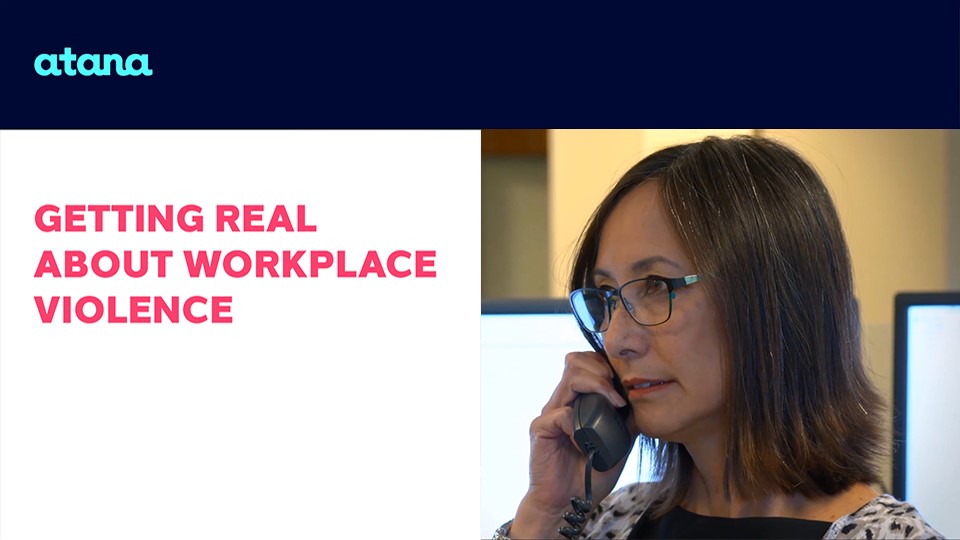
Understanding California's New Workplace Violence Prevention Law
Executive Summary
Effective July 1, 2024, all California employers, unless exempted, must establish, implement, and maintain an effective workplace violence prevention plan (WVPP). Among other mandates, the WVPP must outline procedures for:
- Bringing forward workplace violence concerns.
- Responding to concerns employees have brought forward.
- Communicating with employees about:
- How to bring concerns forward and/or violent incidents to management and law enforcement.
- How concerns will be investigated and how results, including any corrective actions taken, will be shared.
- Responding to actual and potential workplace violence emergencies.
- Obtaining the active involvement of employees in developing and implementing the plan.
- Identifying and evaluating workplace violence hazards (including behaviors of concern, behaviors that are alarming, direct or implied threats, or other potentially escalating behaviors of concern).
- Correcting workplace violence hazards.
- Posting incident responses and investigations.
The Plan must also:
- Include a clear policy prohibiting retaliation against an employee who brings a concern forward.
- Include a Violent Incident Log for recording incidents.
- Involve employees in the development and implementation of the Plan.
- Identify the people names or job titles of the persons responsible for implementing the Plan.
- Coordinate implementation with other employers (e.g., staffing agencies).
- Ensure employees comply with the procedures outlined in the Plan.
- Define procedures for reviewing the Plan’s efficacy.
This new law expands California law regarding workplace violence protection orders. Employers and union representatives may now request a Temporary Restraining Order on behalf on an employee who wants to remain anonymous – and other employees who may be at risk – when an employee has suffered harassment, violence, or threat of violence.
Background
On September 30, 2023, California enacted one of the most comprehensive workplace violence prevention laws in the country. Senate Bill 553 (SB 553) will be applicable to nearly all employers within California, with very few exceptions. Healthcare organizations are exempt from the provisions of SB 553 since existing state law already mandates similar requirements for this industry sector (Section 3342 of Title 8 of the California Code of Regulations). Organizations with less than 20 employees are also exempt from the provisions of this new law. The law also makes significant amendments to the existing California law allowing employers to seek WPV protection orders.
An Expansive Definition of Workplace Violence
In keeping with best practices, the new law defines an expansive view of workplace violence to be “any act of violence or threat of violence that occurs in a place of employment” including:
- The threat or use of physical force against an employee that results in, or has a high likelihood of resulting in, injury, psychological trauma, or stress.
- An incident involving a threat or use of a firearm or other dangerous weapon, including common objects used as a weapon.
- Employees do NOT need to be injured for an incident to be considered Workplace Violence.
- Workplace Violence “does not include lawful acts of self-defense or defense of others.”
Requirements of California Senate Bill 553
Effective July 1, 2024, all California employers, unless exempted, must establish, implement, and maintain an effective Workplace Violence Prevention Plan that includes the following elements:
- Designation of the persons responsible for the WVPP.
- Establish effective procedures to obtain the active involvement of employees and authorized employee representatives in developing and implementing the plan.
- Establish effective procedures for the employer to accept and respond to reports of workplace violence and to prohibit retaliation against an employee who makes such a report.
- Identification of effective procedures to communicate with employees regarding workplace violence, including:
- How to report a violent incident, threat, or other workplace violence concern.
- Effective means to alert employees to the presence of a workplace violence emergency.
- How to obtain help from staff assigned to respond and how to contact Law Enforcement.
- Establish procedures to identify and evaluate workplace violence hazards, including scheduled periodic inspections, and for the correction of any identified hazards.
- Establish procedures for post-incident response and investigation.
- Establish procedures to review and revise the plan as needed, including the active involvement of employees and authorized employee representatives.
- Implementation of a detailed training plan for both initial training about the WVPP when first implemented and a follow-on requirement for annual refresher training.
Learn more about Atana's Getting Real About Workplace Violence program. It is proven eLearning that enables organizations to teach and track crucial workplace violence prevention and response behaviors. An ideal solution for the SB 553 initial training requirement, the Calfornia version of the course comes in Employee and Manager versions and is easily scalable. A dashboard allows organizational leaders to gauge the training's impact on key attitudes and behaviors.
Changes to California Workplace Violence Prevention Orders
SB 553 also amends the California Code of Civil Procedure Section 527.8, allowing employers to seek workplace violence protection orders on behalf of employees. Under the original law, ONLY employers may seek workplace violence protection orders on behalf of one or more employees when the employee has been a victim of violence or when a credible threat of violence has been made against them. But, effective January 1, 2025, SB 553 makes several substantive changes to this law:
- Currently, only an employer is authorized to seek a workplace violence protection order on behalf of its employees. Under SB 553, and as of January 1, 2025, a collective bargaining representative may also apply for a workplace violence protection order.
- SB 553 requires that anyone seeking a workplace violence protection order must first provide the employee for whom the restraining order is sought, the option to remain anonymous. If an employee declines to be named in the application, the law expressly allows the employer (or collective bargaining representative) to seek an order on behalf of other employees in the workplace who may also be at risk.
Record Keeping Requirements
Employers are also required to maintain various records as specified in the new law, including:
- Records of workplace violence hazard identification, evaluation, and correction
- Training records
- A violent incident log for every workplace violence incident
- Records of all workplace violence incident investigations
These records must be maintained for at least five years and provided to CAL/OSHA upon request. The law also outlines what type of information should be recorded in workplace violence logs:
- The date, time, and location of the incident
- A detailed description of the incident
- A classification of who committed the violence
- A classification of the circumstances at the time of the incident including whether the employee was completing usual job duties.
- A classification of the location of the violent incident
- Type of incident, including whether it involved physical, verbal, sexual, or animal attacks
- Consequences of the incident such as medical treatment required and whether security or law enforcement was contacted
- Contact information for the individual completing the violent incident log
What does California consider "effective"?
The new law requires employers to have an “effective” program to prevent workplace violence and to have that program in place by July 1, 2024 when the California Division of Occupational Safety and Health will begin enforcement. It is expected that CAL/OSHA will issue additional guidance regarding what is considered “effective.” Until such amplifying guidance is issued, however, we urge our clients to ensure their Workplace Violence Prevention and Intervention Programs comply with all requirements articulated in SB 553. Organizations should also defer to the American National Standards Institute (ANSI) National Standard for Workplace Violence and Active Assailant - Prevention, Intervention, and Response (ASIS WVPI AA-2020) as the defacto standard for an “effective” program until such time as CAL/OSHA further defines what they consider “an effective program” to be.
Recommendations for employers located in or conducting operations in California
- Review your existing Workplace Violence Prevention, Intervention, and Response Plans to ensure compliance with SB 553.
NOTE: While SB 553 only applies to organizations, companies, and companies with operations in California, we urge our clients to standardize their plans enterprise-wide. - Implement a Workplace Violence incident tracking protocol immediately.
- Update Workplace Violence Prevention & Response training materials to reflect the requirement of SB 553.
- Conduct periodic evaluations to identify and mitigate Workplace Violence hazards.
- Develop and implement a Workplace Violence incident emergency notification system.
About the Authors


DON ROBINSON
Certified Threat Manager & Workplace Violence Expert, Former FBI Supervisory Special Agent
Learn more about Don
For 23 years, Don worked for the FBI – specializing in counterterrorism, organized crime, and narcotics investigations. After retiring, Don began a second career in behavioral health where he established one of the first Behavioral Health Crisis Centers and served as the Manager of Behavioral Health Crisis Intervention Services at a 296-bed community hospital. He is an experienced Crisis/Hostage Negotiator, a Certified Threat Manager®, and a certified law enforcement instructor. Don has trained foreign and domestic governmental agencies, law enforcement/security entities, educational institutions, healthcare organizations, social service agencies and community non-profit organizations.


JAMES SPORLEDER
Workplace Violence Prevention and Response Training Expert (Military and Private Sector)
Learn more about James
James has more than 30 years' experience in the security industry. With a unique background in specialized captivity survival, James has trained thousands of US military personnel from one of the most elite units in the US Department of Defense. He’s worked in the corporate arena for nearly 20 years, focusing on the development and implementation of specialized training programs and helping more than 50 percent of the Fortune 100 prepare for and respond to emerging challenges related to workplace violence, intimate partner violence, and extreme violence such as active shooter.
NOTE:
This summary of recent legislation is provided from our perspective as practitioners of workplace violence prevention, intervention, response, and associated behavioral threat assessment. Employers should consult with their own legal counsel regarding the legal implications of this new legislation.








